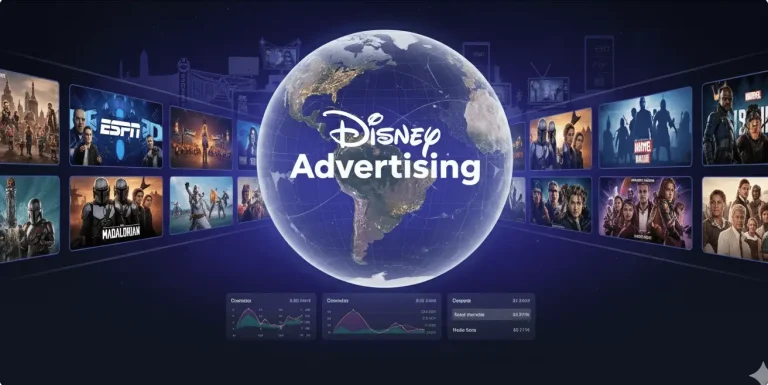Social Media
With the development of technology, digital channels have developed. The way we buy and sell has changed and will continue to change as digital evolves. Programmatic advertising, which initially entered our lives experimentally, has become a part of our lives. It is now becoming an indispensable tool for companies that buy and sell digital media.
IMPORTANT TERMINOLOGICAL TERMS USED IN PROGRAMMATIC ADVERTISING AND DIGITAL MARKETING
Ad-Exchange: The platform where channels, that is, websites and Ad networks, meet with customers and agencies who want to buy inventory.
Conversion: Defines that the user clicks on an ad and performs the desired action. It is a term that indicates performance.
CPA (Cost Per Action/Acquisition): It is the cost of the action taken by the user after clicking on the ad, usually the realization of the sale.
CPC (Cost Per Click): Cost per click.
CPD (Cost Per Download): The cost for the user to download the software or application to their device by clicking on the advertisement.
CPI (Cost Per Install): It is the cost of installing the software or application on the device after the user clicks on the advertisement.
CPL (Cost Per Lead): It is the cost of completing a form or signing up after the user clicks on the ad.
CPM (Cost Per Mille): The cost of viewing the ad 1000 times.
CTR (Click Through Rate): It is the click through rate of the ads. E.g; A CTR of 1% means that one out of every 100 ads shown is clicked by a user.
Multi-Screen (Cross Screen): It is an advertisement reaching the user from more than one screen. This may include display ads containing banners, rich media and videos on TV, mobile and online platforms.
Behavioral Targeting: It is the analysis of the information obtained on which pages the user visiting a site visits, how long he stays on these pages, and the use of the output for targeting purposes in advertising campaigns.
DCPM (Dynamic Cost Per Mille): Used to define dynamic CPM as the impression costs received over RTB vary.
Deal ID: After an agreement between the advertiser and the publisher, the publisher creates a deal ID to integrate the two systems. With this ID given to the advertiser or the trading desk, the advertiser starts buying premium and direct from the publisher’s inventory.
Display: It is the display of text or picture in certain formats to the user. Such advertisements are called banners and generally standard sizes are used. When the user loads the page, it either stays on the page or contains an animation.
DMP: Created by classifying user data. This information is used to create the brand’s own advertising strategies and/or to manage their sites more accurately.
DSP (Demand Side Platform): The technology used by trading desks to make purchases on behalf of the advertiser and the company that provides it.
ECPM (Effective Cost Per Mille): Shows the average cost of 1000 impressions. It is used to define the effective cost per thousand impressions, since each impression can be made at a different cost in programmatic purchases.
Frequency Cap: Indicates how many times an ad is shown to each user per day or per hour.
First Party Data: It is the data collected by the site through cookies in order to reach a specific audience in later publications or to retarget.
User Targeting (Audince Targeting): It is the acquisition of information such as which browser and language the user uses, the geography where he is located, and using these for targeting purposes in advertising campaigns.
Brand Safety (Brand Satefy): It is the publication of advertisements on content or sites that do not pose a risk to brand safety. It prevents the user from identifying the brand with content such as hate and porn that may pose a risk to brand safety.
Optimization: It is the revision of the campaign or publications by analyzing the user data and repetitive user behaviors in order to increase the performance of an advertising campaign.
Programmatic Direct: Much like conventional purchasing, programmatic direct is the communication between the publisher and the advertiser, and programmatically buying and selling premium inventory at a net unit cost.
Programmatic RTB: It is the purchasing method that makes it possible to bid for each impression within milliseconds with the bidding method.
Premium: It is the inventory or content that the publisher determines the price by considering the supply-demand balance.
Retargeting: Re-displaying an ad to a group of users who have previously shown interest in a particular product. Users can be drawn to the site and product once again with a different message in the second targeting.
SSP (Sell Side Platform): A technology used by publisher or ad networks to sell their inventory programmatically.
Third Party Data: It is the target audience data collected and purchased from other companies, as in the example of ‘Those who have looked for a flight ticket in the last three months’.
Trading Desk (Purchasing Platform): It is the company that manages the DSP on behalf of the advertisers.
Source: IAB Turkey (Interactive Advertisers Association)
To learn about the services provided by Marker Groupe, you can contact us via the MarkerGroupe.com website or via the e-mail address hello@markergroupe.com




